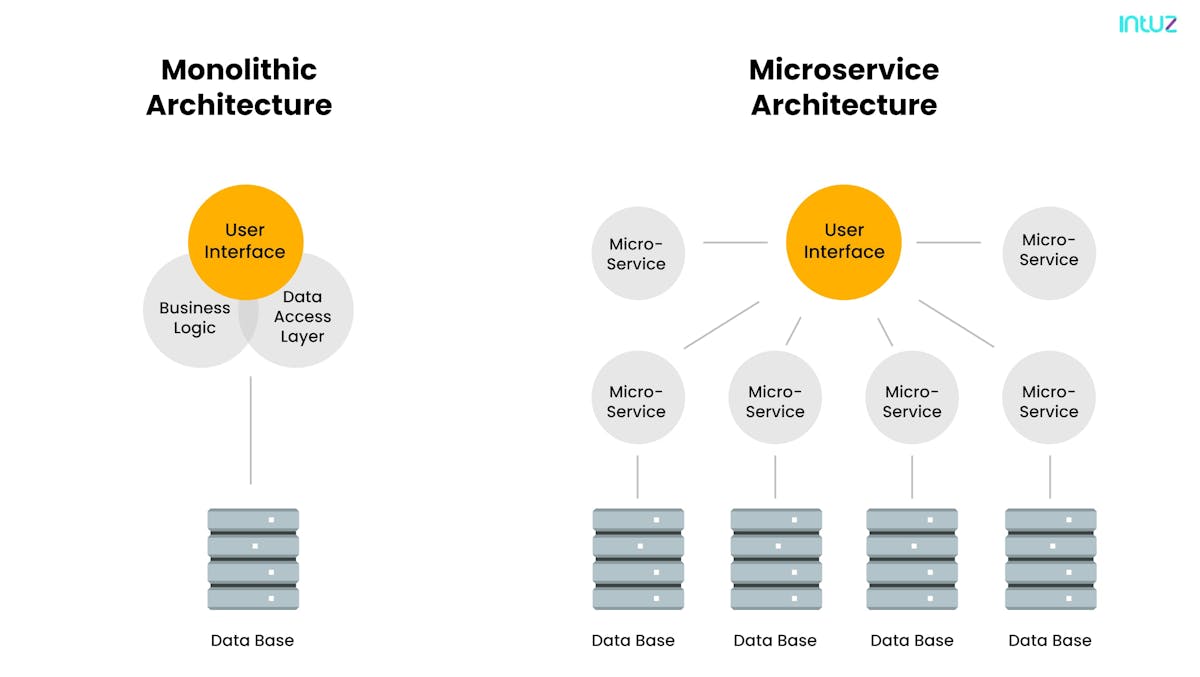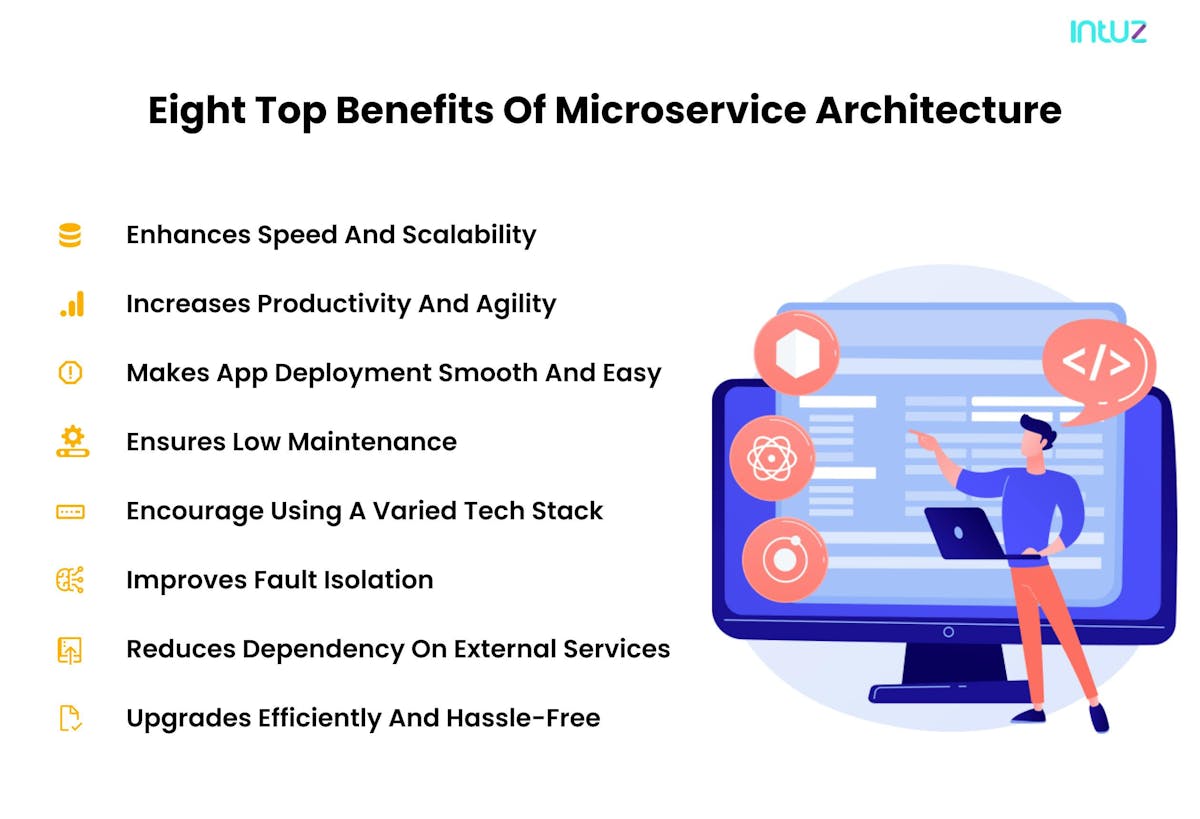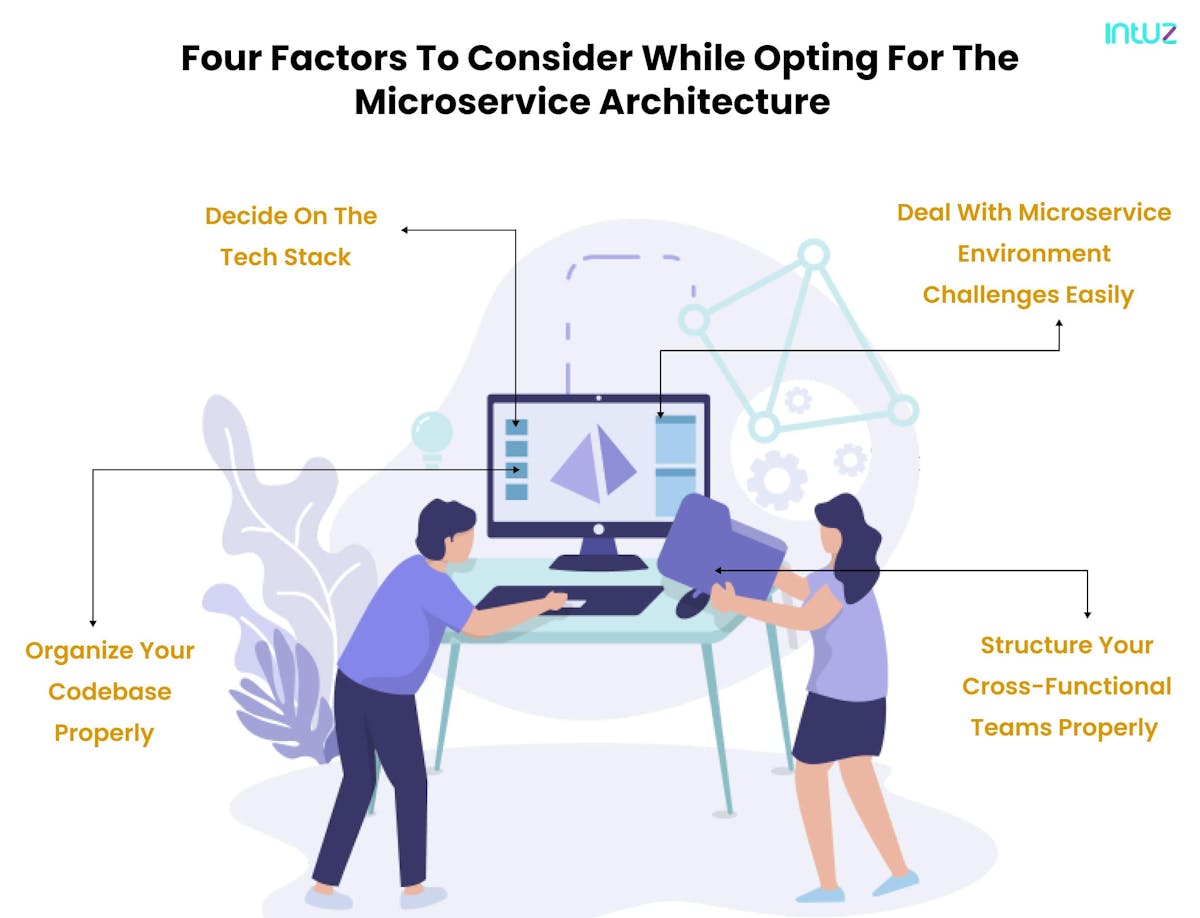There is no surprise we have made great strides in the world of software development. We are just getting started and only better at what we do — from exploring new technologies to building advanced architectural patterns.
Microservices are one such architectural style that is receiving a lot of attention from developers these days. That is mainly because they help develop scalable systems and adjust the functional capabilities of the software as required.
But what are microservices exactly?
Simply put, the microservice architecture comprises a suite of modular components enabling developers to structure an application as a collection of multiple full-fledged services.

That means you do not have to write or upload your entire codebase in a single repository unit and deploy just how a monolith application would be. Instead, this type of architecture allows you to create enterprise-levels apps using various independent small unit components.
This way, you can design and implement different services in a single application, with each service being responsible for a particular task. As of today, the microservice architecture is used by various renowned brands such as Amazon, Netflix, LinkedIn, and Uber.
Microservices in mobile app development
Can we imagine a life without mobile devices? Absolutely not! As per Statista, smartphones are the #1 choice for internet browsing. Naturally, businesses across industries are inclined towards providing an incredible user experience through mobile.
However, just adopting a mobile-first approach does not suffice anymore. A mobile-responsive site will only do just for a short period. Having a mobile app for your business will give you a competitive edge as consumers prefer that to mobile web any time of the day.
Sure, getting the design and development of the app is essential, but choosing the exemplary architecture can be a difficult choice to make.
According to Camuda, 69% of businesses favor microservices to build new mobile apps and upgrade existing ones. That is because the architecture delivers three benefits:
- Improved user experience
- Enhanced employee efficiency
- Reduced infrastructure and cost to develop an app
Is there any specific reason why app developers should choose this architecture? Sure there is.
When to opt for microservice architecture development
Microservice style provide much-needed flexibility to developers to do their job. They allow the developers to incorporate changes within the application components in real-time. The development process thus becomes more dynamic and agile.
It would be best if you chose this technique when you want to:
- Build a mobile app from scratch
- Rebuild or refactor a legacy app
- Add new functionality to an existing app
- Add more database storage for accommodating the bulk of features and services
Fortunately, while 45% of businesses look for the right tech stack, 87% consider multiple technologies for microservices.

Eight top benefits of microservice architecture
1. Enhances speed and scalability of your app
One of the reasons mobile apps should be developed on this internal architecture is that it speeds up the processes and offers on-demand scalability. Each microservice component scales at runtime independently, which allows efficient resource utilization.
Meaning, a component's workload can move to an infrastructure better suited for the task. This makes the application function faster. Moreover, microservices can leverage the cloud-native applications environments' elasticity thus scaling cost-effectively.
Such capabilities are not possible in a monolith architecture. If you want your mobile application to be more responsive to and in sync with market requirements, micro services are what you need. It enables you to roll out digital business capabilities in real-time.
2. Increases productivity and agility
The integration of microservices enhances the app developers' agility and iteration cycles. Since each component is developed, deployed, and tested individually, the developers have the freedom to use the programming language and framework that is best suitable for the functionality being developed.
The architecture reduces the codebase being written and thus improves the productivity levels of the developers. It also enhances the application's maintainability and breaks down complicated apps into manageable services.
That way, developers do not have to wait for another team to finish their job before starting theirs. The flexibility to work on different components simultaneously boosts the productivity levels, shortening the time to market launch.
3. Makes app deployment smooth and easy
In a microservice architecture, the code is written, tested, and deployed at the same time. That means developers keep getting constant feedback on the development process.
Since cross-functional teams handle the software project development cycle in a continuous delivery model, the QA testers, ops team, and developers work together to ensure the app functions smoothly. They are free from any bugs during constant iterations.
Moreover, the teams can be broken down into smaller groups to focus on single components of the application. For instance, if a team working in India is handling three services while the team working in San Francisco supervises five services, each team can deploy different functionalities independently.
Even though the teams work towards fulfilling one application, microservices foster better collaboration and do not hamper the continuous deployment process in any way.
4. Ensures low maintenance
Since each module of the mobile app in this architecture has its database or storage system, it utilizes different underlying resources. This reduces the risk of introducing bugs in the application and enables developers to follow specific workflows.
Smaller and more discrete components are easier to debug and maintain. They take less time to implement changes and therefore help in saving costs and reducing labor. Developers can also fix errors without affecting the whole app.
5. Encourage using a varied tech stack
Since every microservice can be written in a different programming language, this liberates the developers to choose the technologies that would be most appropriate for that particular service. Microservices in different languages can coexist.
The application can scale at an individual level. New components can be constantly added. This architecture is very flexible and also allows you to access a larger talent pool of developers who are adept at different programming languages.
This innovative mix of knowledge and skills would ultimately enable you to develop an app that is high-quality, advanced, and offers a seamless user experience. This is one of the biggest reasons why it is such an ideal choice for mobile app development.
Ever wondered what does it take to develop an exclusive mobile app?
Take a tour6. Improves fault isolation
In a monolithic architecture, if one component fails there, it can bring down the entire application. An excellent example is that of gaming applications built on monolithic architecture. If a specific component such as player history or saved games starts to consume more memory, the entire application's user experience becomes faulty and flawed.
In this type of architecture, developers know exactly where to look for the issues to get resolved. If a single module gets affected, it can be quickly resolved without hampering the performance of other components.
This brings down the development cost of the app, maintains consistency in the quality, and ensures the cross-functional teams can carry out their tasks without any problem.
7. Reduces dependency on external services
Microservices-based applications are deployed within the containers. The services and modules are not implemented in the integrated packages. This arrangement does wonders as it provides microservices application an entire virtual operating systems environment.
Because of that, the developers can access the underlying hardware resources safely. Due to each component's level of independence, it has its resource, process, and space to function. Having said that, there is no factor dependency or reliance on other components.
That is why this architecture is way lighter compared to other techniques. This makes the mobile application also lighter.
8. Upgrades efficiently and hassle-free
As you know, technology is constantly evolving. New mobile services/ phones are being launched on a near-daily basis. Microservices architecture is apt for those developers who are not very sure about the device their app will operate on.
This architecture gives them the freedom to make quick but controlled upgrades to the application without bringing it to a halt on a continuous basis. The users are happy, and developers can keep doing their job.
Four factors to consider while opting for the microservice architecture

1. Decide on the tech stack
It is excellent that every microservice can have a different programming language, testing, and logging framework, monitoring functionality, database storage, and so on. But you have to choose a tech stack for every microservice, and this can be pretty tedious.
Of course, opting for a standard technology would not solve the purpose. Moreover, managing teams experienced in different tech stacks can be a hassle if you are not prepared. Therefore, before deciding on the technologies, you need to be clear about what you want.
Do you want to go for a standard tech stack? Do you want to have different technologies for each microservice? Discuss this at length with your team. Go through the pros and cons. Mainly focus on the following four questions:
- How competent are your app developers?
- What method is appropriate for every microservice use case?
- Which tech stack offers strong support in terms of reading material and community?
- What type of libraries are available that can be used to accelerate open-source software projects?
2. Organize your codebase properly
When you move to micro services, think about how you will organize your codebase. This is not such an overwhelming obstacle and can be done in two ways:
- Create a repository for each microservice
- Create a single "mono repo" that stores all your codes for every project
Multiple repositories will be made of smaller codebases, which will make it easier for developers to build and implement a whole stack of microservice. However, this option only works for smaller applications.
On the other hand, going for the second option means developers will enjoy reduced code complexity, sharing common components, and better development testing. This will allow the mobile app to develop and deploy independently.
The decision to choose either of the two options depends on factors such as the nature of services, the size of the business, the skill set of the developers, and so on. Therefore, you need to think over the situation thoroughly before taking a call.
3. Deal with microservice environment challenges easily
Integrating various microservices in the application can be tedious for businesses — if it is tied to a particular technology, that causes issues when the developers try to use multiple programming languages.
Plus, the availability of tools and technologies such as Kubernetes and Docker containers is essential from an infrastructural perspective. If the tech stacks are easily accessible, the developers can quickly deploy, manage and scale different microservices. Otherwise, it would not happen.
Keeping track of the monolithic application is more manageable. Why, you ask? If one component goes down, the entire application crashes or gets hampered — as we learned in the gaming example. What is needed is a good logging service discovery that can be searched easily if an app module falters.
Developers can then easily find and fix it without affecting the rest of the application. Lastly, developers should leverage a language-independent tech stack in the mobile app development process. Refactoring of services can be done on a smaller scale in this type of technique.
Tech stack for your mobile app wouldn't be good until you choose a better
Find the right tech stack here4. Structure your cross-functional teams properly
If you want the microservice architecture of your mobile app to perform well, each microservice needs to develop, implement and maintain independently. To ensure this happens, teams need to be aware of their responsibilities and duties.
Therefore, it is best to appoint a team that can supervise every microservice separately to fix glitches and track the performance of every component easily. If it takes a long period to provision a server, the infrastructure can be in serious trouble.
Ways to implement a microservice architecture
Step 1: Decide whether or not you want to develop your app leveraging this architecture.
Step 2: If you nod in approval, analyze your existing infrastructure. If you are building a new mobile app, identify key functionalities you are looking to have.
Step 3: Set up a development team that has previously worked with this architecture. Cross-check with them if they understand their roles and responsibilities.
Step 4: Pick up a suitable coding language and framework.
Step 5: Set up the base architecture with containers, virtual machine templates, and services.
Step 6: Implement the API gateway as they are the main entry point for all users.
Step 7: Deploy the most common [or basic] non-functional requirements at the Gateway level.
Step 8: Monitor and map the monitoring of the application.
Step 9: Perform automation testing to ensure there are no bugs and the app runs smoothly on the architecture.
Step 10: Make necessary fixes if needed.
A Conclusive Guide On The Top 19 Automation Testing Tools
All You Need To KnowWrapping it up
The microservices architecture is perfect for your business if you want to enjoy a rapid and reliable delivery of complex and large-scale mobile apps. The architecture also enables you to evolve the technology stack and make the most of it.
Since each microservice is relatively small, it is easier for developers to understand. The IDE is faster, which enables the team to be more productive. The deployment is more rapid, which makes the mobile application lighter and runs faster.
If you are looking for DevOps services to build your mobile app on microservice architecture, look no further. Our expert team can sort out your requirements quickly. Contact Intuz.





